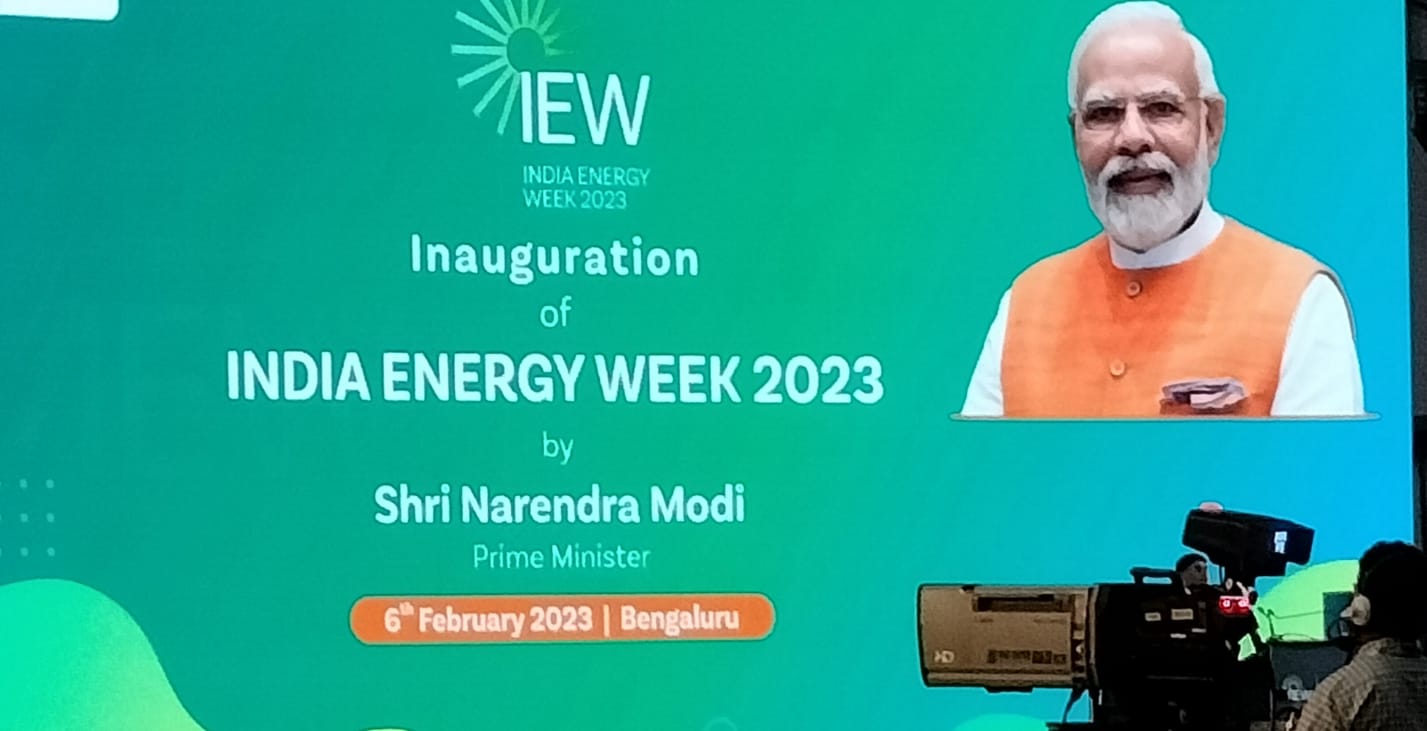India set to revolutionise its kitchens with solar power, says Prime Minister Narendra Modi

By Team Indoen
Posted on 06 Feb 2023
India intends to start revolutionising its kitchens,
said Prime Minister Narendra Modi. He was delivering his inaugural address at
the India Energy Week 2023 in Bengaluru today.
The prime minister also launched the twin-cooktop
model of the Indian Oil Corporation’s indoor solar cooking system, launching
its commercial production. He said the cooktop was going to give a new
dimension to green and clean cooking in the country.
The Prime Minister said that in the last nine
years, India had successfully connected more than 19 crore people to clean
cooking fuel.
Modi further emphasized that more than three crore
households would have access to solar cooktops in the next two-three years.
With over 25 crore people using solar cooktops, this would revolutionize Indian
kitchens.
Today in India there was a mass movement in the
energy transition. This was happening in two ways, the first being the
large-scale adoption of renewable sources and the second being homes, villages
and airports running on solar power and the use of solar pumps in agriculture.
Quoting International Energy Association, the Prime
Minister remarked that India’s energy demands would be highest in the present
decade which presents an opportunity for the investors and stakeholders of the
energy sector. He informed that India’s share in the global oil demand was 5%
which was expected to rise to 11%, whereas the gas demand of India was expected
to rise to 500%.
With the use of LED bulbs, smart meters, the
adoption of electric vehicles, etc. there was a rapid shift towards energy
conservation. Briefly touching upon battery cost in EVs, Modi said that
batteries currently accounted for 40-50% of the cost of the car. However, the
government had begun a PLI scheme worth Rs. 18,000 crores which would[PC1] be significant in manufacturing advanced chemistry
cells of 50-gigawatt hours.
Modi said that in the budget the government had given
enough space to renewable energy, energy efficiency, sustainable transportation
and green technologies. Around Rs. 35,000 crores had been earmarked for capital
investments in energy transition and net zero objectives. The provision for 10
lakh crore rupees capital expenditure would give a push to green hydrogen,
solar to road infrastructure, he added.
The prime minister explained four major verticals
for the strategy for the energy sector. First, increasing domestic exploration
and production, diversifying the supply, and third, expanding fuels like
biofuel, ethanol, compressed biogas and solar. Fourth, de-carbonization via
electric vehicles and hydrogen. Elaborating on these verticals the prime minister
said India was the fourth largest country for its refining capacity. Efforts were
on to increase the capacity to 450 MMTPA from the current capacity of 250
MMTPA. “We are continuously making our refining capacity indigenous, modern and
upgraded”, he said. Similarly, India was working to enhance petrochemical
production capacity.
The prime minister informed that the government was
working on a mission mode to increase the consumption of natural gas in our
energy mix from 6% to 15% by 2030 where all the needed infrastructure would be
provided by ‘One Nation One Grid’. “The government is trying to increase the
capacity of LNG Terminal regasification”, the prime minister said. He further
added that the terminal regasification capacity of 21 MMTPA had doubled in 2022
while efforts were being made to increase it even more. He also added that the
number of CGDs in the country had gone up 9 times and the number of CNG
stations had gone up to 5,000 from 900 in 2014. The prime minister also touched
upon the gas pipeline network which had increased to 22,000 kilometres from 14,000
in 2014 and pointed out that the network would expand to 35,000 kilometres in
the next 4-5 years.
Regarding bio-energy expansion, the prime minister
talked about the first 2G ethanol bio-refinery in August last year and said
that preparation was for 12 commercial 2G ethanol plants. Similarly, efforts were
in the direction of the commercial feasibility of sustainable aviation fuel and
renewable diesel. Mentioning the provisions of this year’s budget the prime minister
informed about 500 new ‘waste to wealth’ Gobardhan plants, 200 compressed
biogas plants and 300 community-based plants which would create new avenues of
investments.
“The National Green Hydrogen Mission will give a
new direction to the India of the 21st century”, the prime minister remarked.
He underlined that the country was aiming to produce 5 MMTPA green hydrogen by
the end of this decade which brought in the possibility of investments of more
than Rs 8 lakh crore. He also added that India would increase the share of
green hydrogen to 25% by replacing grey hydrogen.
PM Modi also said that India had an enormous
responsibility on its shoulders with G-20 Presidency and the ongoing event was
expected to provide a major fillip in energy transformation.
- India to tighten scrutiny on EV investments: Report
- New e-car norms on way as India ... a China Wall on EV street
- The Electric Vehicle Challenge: Can We Make it Sustainable in India?
- Govt to come out with detailed guidelines for EV policy
- Delicensing Electricity Distribution in India...Green Power Adoption
- We need to build a circular economy ... energy value chain
- Green power on super-fast track
- Tendering in India’s renewable energy sector crosses 69 GW, says IEEFA
- India to add 14.5 GW of PV per year in fiscal 2025, 2026
- ADB approves $148.5 m loan to improve power supply in India